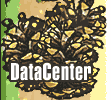The East Haven Green is a rough rectangle, measuring about 350 feet along River Street, the Southern Border, about 225 feet along Hemingway Avenue, the western border, about 325 feet along Main Street, the northern border, and about 290 feet along Park avenue, the eastern border. Main Street curves as it passes the green, so that border is convex.
Both Main Street and Hemingway Avenue are four-lane highways, with traffic traveling in both directions serving commercial and residential development. New commercial development is concentrated at the intersection of these two streets, where two- and three-story brick office buildings have been constructed within the last ten or fifteen years. Farther to the northwest are a shopping center, and beyond it, high-rise apartment buildings. The apartments are visible from the green. On the other corner of Hemingway Avenue are remnants of the past: two wood-frame houses. One, a late 17th-century two-story house with a center chimney, has been converted to offices and shares an asphalt parking lot with the modern office building to the north. Wood-frame houses can also be found along the Main Street and Park Avenue sides of the green, most of them dating to the late 19th or early 20th centuries. Several of these have been covered with modern aluminum or vinyl siding. Exceptions are a Cape house on Main Street, and two other 18th-century houses on Park Avenue.
Park Avenue is a quiet, two-lane residential street, with traffic going in both directions. Two houses were built in the 18th century. An episcopal church built in 1964 stands between them. The other houses on the block were built around the turn of the century. Eight large maple trees standing in front of the houses contribute to the feeling of solitude.
To the south of the green is River Street, a two-lane street, and the Eastlawn Cemetery. Part of the cemetery is enclosed by an iron fence with a large stone gateway; part is screened from the street by a dense row of evergreens, perhaps a hedge that has been allowed to grow into trees. Four very large sycamores stand along the street in front of the cemetery.
The green itself is planted in grass and surrounded by a concrete curb. Just inside the curb are fluted cast-iron bollards with fluted bases and round tops, linked together by chains (the chains are mostly missing on the east and south sides of the green). Two concrete paths cross the green diagonally, meeting at approximately its center. Lining these paths are lamps on tall iron posts resembling the bollards around the edge. A narrow asphalt ad hoc path runs along the Main Street side inside the bollards and chains. The focal point of the green, a bandstand, stands just to the southwest of the intersection of the concrete paths. East of this center point is a cannon. It and other monuments honor war veterans. Mature trees provide a green canopy over most of the green.
The bandstand is hexagonal in plan and of recent construction. Its base is covered by latticework. Plain wood rails surround the platform and plain wood posts support the convex, trumpet-shaped roof with a hexagonal cupola at its peak. At the eaves, at each corner, is a simple pendant. Small shrubs and flowers surround the bandstand, contained by wooden beams forming a curb. A flight of stairs ascends to the platform from the north. A rectangular concrete pad adjoins the bandstand to the south; vehicles can gain access to it by means of a curb cut on River Street and a rough path across the grass.
Symmetrically placed at the northwest corner of the green, facing the commercial section, are three stone memorials. The largest, standing in the center of the concrete path, is a tall granite pier standing on a circular concrete slab and landscaped with small shrubs and flowers. An eagle is carved in bas-relief on the front of the pier, and a globe sits on top of it. Erected in May 1988, by the American Legion, it is dedicated to war veterans. This monument and two flagpoles flanking it are spotlighted, making the ensemble the focal point of this corner of the green.
Behind and to each side of the large monument are similar rose-colored granite slabs about six feet tall, with bronze plaques. The monument to the east is dedicated to soldiers who fought in World War I, and the other to East Haven men who died in World War II. Each is flanked by concrete urns for flowers. A small rectangular stone marker was erected in May 1985 in memory of Richard Wolcheski, who died in the Vietnam War.
The ground rises slightly just east of the center of the green, where a large cannon on a granite base is mounted facing south. Behind it is a stack of cannon balls. It was dedicated in 1911 and rededicated in 1990 in honor of war veterans who "by land and sea offered their lives."
Some 130 trees shade the green. Most are mature maples of several varieties. There are also several oak, chestnut and elm trees, a couple of conifers, a few dogwoods, and several one-of-a-kind trees. A greater variety is found in the smaller trees more recently planted. The trees initially appear to be planted in a random manner, but it then becomes apparent that some of the older trees were planted in rows, either along the walks or in what might have formed an inner square half-way between the center and the edge of the green. Around the edge of the green there are several very large maples, as large as the trees shading the cemetery across the street, perhaps an indication that at one time the border of the green was less defined than it is now.
The southern quadrant of the green (as defined by the concrete paths that cross in the center) has relatively few trees, leaving an open area adjacent to the bandstand and concrete pad. Toward the southeast corner, however, there are about five irregular mounds of earth close together, planted with a variety of shrubs and ornamental grasses and trees. This feature appears to be a rather recent addition.
There are a few bright blue, plastic trash cans placed around the interior of the green, and three simple benches with metal frames and wooden seats, symmetrically located on either side of the center point facing the paths.






![]()